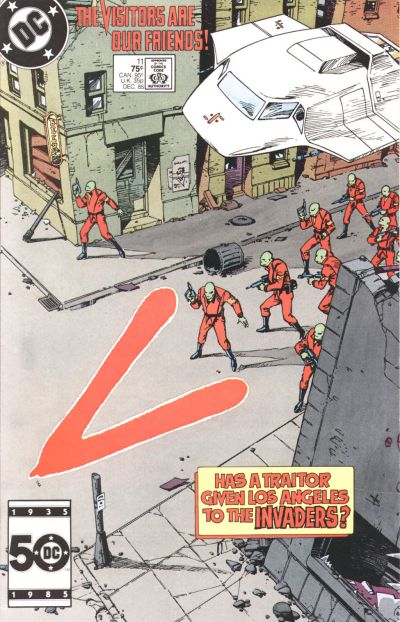
Star Trek #5 (Feb. 1990) 
Star Trek #6 (March 1990)
In 1990, with few journalism classes under my belt, I decided to write a letter good enough to get published in a comics letters page.
I loved the letters columns in DC’s Star Trek and Star Trek: The Next Generation. I think editor Bob Greenberger did the most professional, fun and informative letters columns I’ve ever seen. Not only was this letter column the best place to discuss the comic, but for Trek in general.
I wrote off one letter, commenting on Star Trek #5 (Feb. 1990). And another on the following issue.
The first was printed in Star Trek #9 (June 1990).

And the second letter showed up in the following issue.

I wanted to write a serious letter. I had just read and had some criticisms of Wolverine #25 (June 1990), which had a spiffy Jim Lee cover. This is a fill-in issue written by Jo Duffy and drawn by John Buscema. In it, an old friend of Logan’s named Morrow calls in a debt. He needs Wolverine to protect his son, Gabriel, during the climactic battle of a gang war. Logan reluctantly accepts. He tells Gabriel a story about a boy lost in the Canadian wilderness who is raised by a pack of, uh, wolverines. That inspires Gabriel to “help out” when the gang war comes home, allowing Logan to decide the battle in Morrow’s favor.

Wolverine #25 (June 1990).
Art by Jim Lee.
Wolverine #31 (Late Sept. 1990).
Art by Marc Silvestri and Dan Green.
I really disliked the story at the time. Wolverine had become quite the success as a solo character and the number of writers now contributing to his ongoing story had grown far beyond the vision of longtime X-Men writer Chris Claremont.
Plenty of interviews quoted Claremont as saying he saw Logan as a man of mystery. It was better to never know his origin because no story could measure up. (See 2001’s six-issue Origin series for proof.) I agreed with Claremont, and therefore disliked this story.
And raised by wolverines? Really? I am a big fan of Jo Duffy’s work, but this was goofy.
So, I wrote up a letter, mailed it and — to my surprise — it saw print in the pages of Wolverine #31 (Late Sept. 1990). My letter was printed without editing — and there was a response from the editors!

And then my letter got a response two issues later.

Two issues after that one, there was another reference to my letter.

I didn’t write more letters until after I had graduated and had started a career as a newspaper editor.
It was this period when I could finally afford to subscribe to the Comics Buyers Guide, and its weekly letter column was a real highlight. I was deeply into comics now that I could afford them to some degree. I even wrote a few articles about them at the newspaper, and made my first trek to San Diego Comic-Con in 1993.
Copies of those issues of CBG my letters appeared in are long gone, but I do have a couple of printouts I made before sending them.
Here’s the first, which discusses the issue of ratings systems for comics that was controversial in 1994, the era of the V-chip!



Amazingly, I don’t cringe when I read that, and I still mostly agree with what I said.
And here’s another letter, from 1997, that’s more critical of CBG and the industry as a whole.



I received the following reply from Peter David, though I don’t recall exactly what I wrote in the letter he was replying to.

I had a couple of comics creators or publishers send me samples of their work. In particular, I remember receiving copies of an indy black-and-white comic called Hilly Rose from B.C. Boyer. It had a Pogo/Bone vibe to it, and I ordered subsequent issues after liking what Boyer had sent.

Those also were the early days of the internet, and like everyone else, I used my Macintosh Performa 630CD to log on to America Online and check out its comic book areas.
If you weren’t around in those days, AOL charged a monthly fee of something like $12, and that got you, say, five hours of connection time. Once you went over that five hour limit, they started charging you by the minute. And it quickly became clear that five hours a month was nothing, and it only took a few big bills to switch to an ISP that charged only a flat rate.
Anyway, I was in a comics group when someone from Dark Horse Comics was asking for volunteers to read a new first issue and write a letter about it so they had some letters to put into that first issue. I immediately signed up, and soon a package from Dark Horse arrived with black and white copies of a comic called Heartbreakers, by Anina Bennett and Paul Guinan.

I wrote up a letter, sent it back, and it was published in that first issue.


Art by Paul Guinan and Tony Akins.
A number of years later, I met Anina and Paul at a dinner a mutual friend threw at Comic-Con. I told them this story and we all had a laugh. Stopping by their booth the next day, Anina had a copy of that comic on the table and I was able to show her the letter.
I forget exactly when letters columns faded away from most comic books, but I miss them. Even when they crop up these days, they lack the kind of thoughtful missives and discussion that turned up back then.























